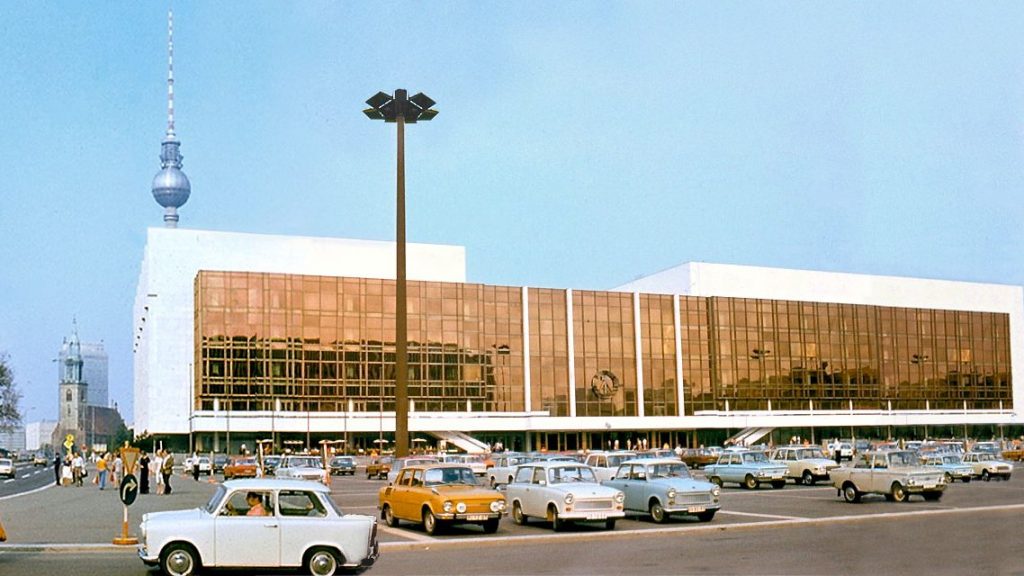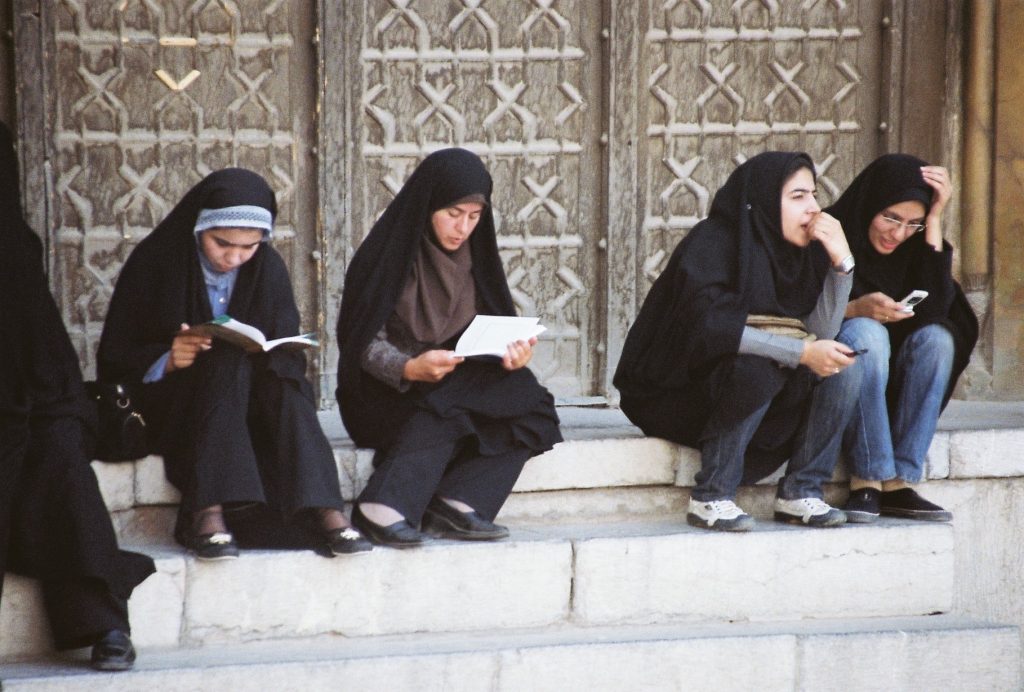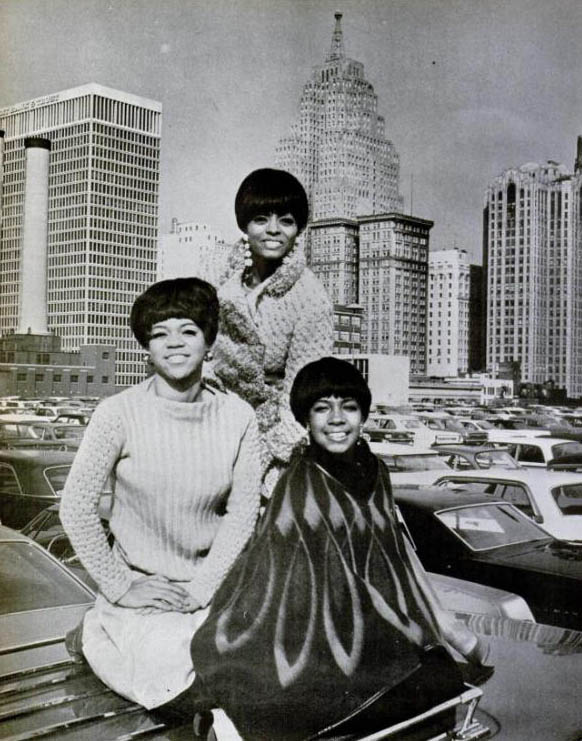Why I Chose It: Michigan Quarterly Review Reader Michael M. Weinstein introduces Jenny Erpenbeck’s “Palast Der Republik” from our Fall 2019 Issue: What Does Europe Want Now?
Translated by Susan Bernofsky
Don’t let the brevity and apparent simplicity of Jenny Erpenbeck’s “Palast der Republik” fool you. Erpenbeck, born in East Berlin in 1967, is the author of five novels and has been called “one of the most significant German-language novelists of her generation.” This short, autobiographical piece displays many of the most appealing aspects of Erpenbeck’s writing: witty, spare, unsentimental narration; descriptions at once luscious and elegiac; and a keen attunement to the political valences of the contingencies that shape our lives.
“Palast der Republik” is the story of one young woman’s relationship to the Palace of the Republic, or “People’s Palace,” a multiple-use building completed in 1976 that housed not only the parliament of the German Democratic Republic, but also a theatre, art galleries, auditoriums, numerous restaurants, a post office, a discothèque, and a bowling alley. The protagonist attends the opening of this monument to the grandeur of socialism as a third-grader; her teacher even offers everyone a souvenir envelope, a prefabricated memory of a place that has not yet been occupied. “At the time,” Erpenbeck writes, “I was still planning to study archaeology to dig up palaces.”
Beneath the narrator’s ironic, archaeological eye, even the smallest aspects of her experiences of the Palace grow heavy with significance. The cutlery in the palace café, provided by a company for which her Aunt Sigrid once worked, reappears again and again, from her childhood hot chocolates to her first dates. The story proceeds as an accretion of objects and vantage points within the palace, until what we have is a private architecture: a trove of touchstones for the narrator’s past pains and private epiphanies. In short, a monument to memory.
We don’t need a spoiler to foretell that by now—as Erpenbeck drily remarks—“the palace [has] gradually [lost] its Republik.” But this story does more than point a finger at the ideological vacuum where the glories of East German socialism once hulked. Indeed, it suggests that the hollowing-out of the beliefs that the palace was built to incarnate only exposes the scaffolding of those beliefs more clearly. The Palast der Republik was closed in 1990, demolished in 2003, and finally replaced by a new Berlin Palace, scheduled to be completed this year. But Erpenbeck’s story ingeniously takes us behind the reconstructions. Buildings, like governments, rise and fall—and yet, the history of a country also happens in moments, in rooms we can neither forget nor reenter.
When the Palast der Republik had its grand opening, I was in third grade. My teacher’s name was Fräulein Kies. Fräulein Kies held up a printed envelope featuring the new palace and explained to us what a first day cover was. It didn’t immediately occur to me that the term “first day cover” not only has the same number of syllables as “one-hit wonder” but also contains similar vowels. Fräulein Kies said that now each of us would be given a first day cover and that we should put it somewhere safe, because one day we would be proud to have been there for the opening of the new palace. After the first day covers had been distributed by Fräulein Kies, our class took a field trip to visit the brand-new palace of the people.
At the time, I was still planning to study archaeology to dig up palaces, and for this reason I appreciated the different varieties of marble down by the coat check counters. Up in the picture gallery, there were carpets everywhere. Very high up, hanging from the ceiling, were lamps that looked like air bubbles, making it easy to imagine yourself underwater. These lamps had been organized by the company where my Aunt Sigrid worked. This company was also responsible for the silverware in the palace café, including the spoons I used later in life to stir first hot chocolate and then coffee, as well as the knives and forks in the wine bar with which I would slice into a pork knuckle or schnitzel Hawaii when my first boyfriend took me out to dinner. At the Palast der Republik I got my finger caught between two bowling balls, heard a concert by a famous female pianist in the theater—fifth floor—that made me resolve to become a pianist myself, and lugged the heavy cast-iron chairs into position in the wine bar with its view of the Spree River so I could sit in comfort.
When many years later it became apparent that the palace was gradually losing its Republik, I pocketed one of the spoons with which my aunt had outfitted the café, just in case. Three days ago, as I was driving past the palace, I could already see right through it. Possibly because of structural considerations, the demolition had started in the middle of the building so that the parts still made of something framed this middle part, which now basically consists only of air. I thought of Fräulein Kies and wondered whether she might be permitted to use the title Frau these days, even if she has still not yet been married by any man.
SUSAN BERNOFSKY directs the program in literary translation at Columbia University. A Guggenheim fellow, she has translated classic works by Robert Walser, Franz Kafka, and Hermann Hesse. Her translation of Jenny Erpenbeck’s novel The End of Days (2014) won the Independent Foreign Fiction Prize, the Schlegel-Tieck Translation Prize, the Ungar Award for Literary Translation, and the Oxford- Weidenfeld Translation Prize. Her translation of Erpenbeck’s Go, Went, Gone (2017) won the 2019 Lois Roth Award.




